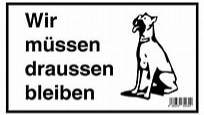Doblhoff WNF 342 V4-EN
Doblhoff WNF 342 V4
Shown here as a model in scale of 1 : 11 – built by Dieter Störig
The Doblhoff/WNF 342 was the first helicopter to take off and land using Tip jets to drive the rotor, built by the “Wiener Neustädter Flugzeugwerke” (WNF) under the direction of Baron Friedrich von Doblhoff.
The WNF 342 was designed for a German Navy requirement for an observation platform for use from small ships and submarines.
The conventional piston engine drove both a small propeller (to provide airflow across a rudder) and an air compressor to provide air (subsequently mixed with fuel) through the rotor head and hollow rotor blades to a combustion chamber at the rotor tips. As a research helicopter it was a simple design to allow modification.
V1/V2: The first helicopter was initially powered by a 60 horsepower (45 kW) engine (V1) and then a 90 horsepower (67 kW) engine (V2)—both by Walter Mikron. It first flew in 1943, and was captured with V4 at Zell am See.
V3: The second WNF 342 had a larger rotor and was destroyed during testing.
V4: The last unit produced was a two-seat variant with new collective and cyclic controls. After 25 flight hours it was captured by United States forcesand on 19th July 1945, shipped to the US under Operation Lusty on the HMS Reaper (D82).
Specifications (V4):
General characteristics
- Crew: 2
- Main rotor diameter: 10.00 m (32 ft 9¾ in)
- Main rotor area: 78.54 m2 (845.42 ft2)
- Empty weight: 430 kg (948 lb)
- Gross weight: 640 kg (1,411 lb)
- Powerplant: 1 × BMW-Bramo Sh.14A radial piston engine, 104 kW (140 hp)
Performance
- Maximum speed: 48 km/h (30 mph)
Text from Wikipedia, the free encyclopedia



